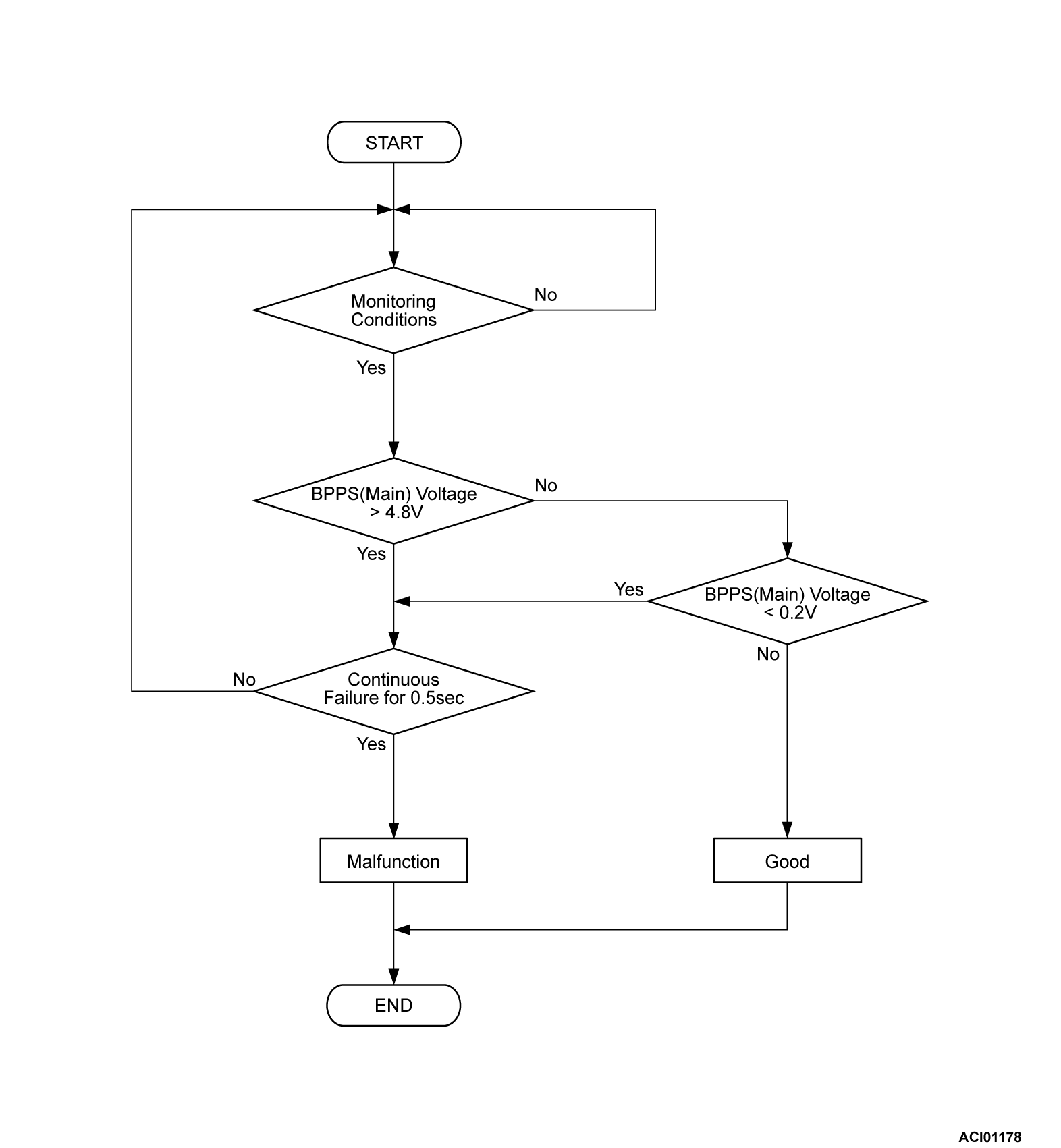DTC P057C: Brake Pedal Position Sensor(1) Circuit Low
| caution | Before replacing the ECU, ensure that the communication circuit is normal. |
MONITOR EXECUTION
- Continuous
MONITOR EXECUTION CONDITIONS (Other monitor and Sensor)
Other Monitor (There is no temporary DTC stored in memory for the item monitored below)
- Not applicable
Sensor (The sensor below is determined to be normal)
- Not applicable
DTC SET CONDITIONS
Check Conditions
- The PHEV-ECU power supply voltage is more than 9.0 volts.
Judgment Criterion
- The brake pedal stroke sensor (BPS2) output voltage is less than 0.2 volt for 0.5 second.
PROBABLE CAUSES
- Damaged harness or connector.
- Malfunction of the brake pedal stroke sensor.
- Malfunction of the PHEV-ECU.
DIAGNOSIS
Required Special Tools
- MB991223: Wiring harness set
- MB992006: Extra fine probe
STEP 1. Voltage measurement at the brake pedal stroke sensor connector.
(1) Disconnect the brake pedal stroke sensor connector, and measure at the wiring harness side.
(2) Turn on the power supply mode of the electric motor switch.
(3) Measure the voltage between terminal No. 3 and body ground.
OK: Approximately 4.9 - 5.1 volts
Is the check result normal?
STEP 2. Check the BPP2 line for open circuit and short to ground circuit (PHEV-ECU and brake pedal stroke sensor).
(1) Disconnect the C-39 PHEV-ECU connector and brake pedal stroke sensor connector, and measure at the wiring harness side.
(2) Measure the resistance between C-39 PHEV-ECU connector (BPP2 terminal) and brake pedal stroke sensor connector (terminal No.3).
OK: Continuity exists (2 Ω or less)
(3) Measure the resistance between C-39 PHEV-ECU connector (BPP2 terminal) and body ground.
OK: No continuity
Is the check result normal?
STEP 3. Check the BPS2 line for open circuit and short to ground circuit (PHEV-ECU and brake pedal stroke sensor).
(1) Disconnect the C-39 PHEV-ECU connector and brake pedal stroke sensor connector, and measure at the wiring harness side.
(2) Measure the resistance between C-39 PHEV-ECU connector (BPS2 terminal) and brake pedal stroke sensor connector (terminal No.2).
OK: Continuity exists (2 Ω or less)
(3) Measure the resistance between C-39 PHEV-ECU connector (BPS2 terminal) and body ground.
OK: No continuity
Is the check result normal?
STEP 4. Brake pedal stroke sensor check.
Refer to GROUP 35A - Brake Pedal Stroke Sensor Check  .
.
 .
.| caution |
|
Is the check result normal?
![[Previous]](../../../buttons/fprev.png)
![[Next]](../../../buttons/fnext.png)


